Best Tide Pooling Spots Near San Francisco
When the ocean recedes during low tide, it reveals a wealth of life usually hidden underwater. A rich variety of animals and plants appears—some of which might seem strange or even out of this world. Looking into the ocean like this is fascinating because it shows us a part of nature we rarely get to see.
While it’s exciting to watch larger marine mammals like seals, sea lions, or even whales, the smaller creatures that live hidden lives are just as amazing.
Tide pooling is one of my favorite ways to explore nature because it often brings surprises. Sometimes, what you find is as obvious as a sea star clinging to a rock; other times, it takes a closer look to spot something like an octopus tentacle waving from beneath a ledge. Exploring the intertidal zone at low tide is both calming and exciting—and luckily, there are plenty of great spots right near, and even in, San Francisco.
In this guide, I’ll share my favorite tide pooling spots from years of exploring the coast. You’ll also find practical tips on when to go, what to look for at specific locations, and how to stay safe while respecting these delicate ecosystems.
Settle in, grab a cozy beverage, and let’s get started!
Table of Contents
In a Nutshell: Intertidal Zones
What Are Intertidal Zones?
Intertidal zones are coastal areas that are underwater at high tide and exposed to the air at low tide. They form one of the most diverse and extreme habitats on Earth, where marine organisms must adapt to dramatic shifts in temperature, moisture, and wave action. These zones support a rich array of life and are ideal for tide pooling.
Subzones (per NOAA)
- Spray Zone: Above the high-tide line. This area is moistened by sea spray and only submerged during the highest tides. Organisms here must tolerate long dry spells and direct sun.
- High Intertidal Zone: Flooded only during high tides. Home to barnacles, limpets, and periwinkle snails that can survive long periods out of water.
- Mid Intertidal Zone: Regularly submerged and exposed. Mussels, anemones, crabs, and sea stars thrive here.
- Low Intertidal Zone: Mostly underwater, exposed only during very low tides. This zone is the most biologically diverse, home to sea urchins, nudibranchs, small fish, and octopus.
Source: NOAA: Intertidal Zone Facts
Best Tide Pooling Spots
China Beach (San Francisco)
Tucked into San Francisco’s quiet Sea Cliff neighborhood, China Beach is not only a great tide pooling spot directly within the city, but also offers amazing views of the Golden Gate Bridge. It’s best explored during a negative low tide (access is tricky otherwise, read more in info box), when the receding water reveals a rocky shoreline where sea anemones, mussels, and other marine life take temporary shelter between boulders.
🚗 Parking : Small parking lot at China Beach, fills up quickly on weekends.
🌊 Type of Tide Pools: The term tide “pools” may be a bit confusing when it comes to China Beach – you will enter the intertidal zone, but you won’t find what you may consider as the name 'pools' suggest – instead there are large boulders and rocks here that offer shelter for a variety of ocean critters until the water comes back.
🦀 Best For Seeing: Sea anemones (giant green & aggregating; moonglow if you're very lucky), mussels, barnacles, limpets and occasionally (ochre) sea stars in shady, protected areas along the sides of the rocks.
📍 Spot Overview: Located on the northeast end of China Beach (right side when facing the ocean). Only accessible at very low tide (at least -0.5 ft) as the 'entrance' is behind large boulders that get quickly trapped between the ocean. Wander between large rocks with views of the Golden Gate Bridge. At very low tide, you can walk all the way to Baker Beach along the shore.
⚠️ Safety Note: Do not enter behind the first large rock if the tide is rising — you risk getting trapped by incoming water, and rip currents here can be dangerous.
📈 Tide Chart: Check NOAA Tide Chart
Linda Mar | Pacifica State Beach (Pacifica)
Pacifica State Beach—also known as Linda Mar—is a popular surfing spot just south of San Francisco. While it’s not an absolute prime tide pooling destination like Duxbury Reef or Fitzgerald Marine Reserve, the north end of the beach reveals rocky intertidal areas during very low tides, where you can find a surprising variety of marine life. It’s a fun place to explore casually, especially if you’re already here for a beach walk, a surf session, or a hike up nearby Mori Point—which I highly recommend, especially in April and May when native wildflowers are in full bloom!
🚗 Parking: Paid lot available, which is extremely busy on weekends (popular surfing beach), but much more relaxed on weekdays.
🌊 What to Expect:
- Tide pools at the north end of the beach (walk right when facing the ocean)
- Rocky outcroppings exposed at low tides, ideally ≤ -0.5 ft
- Not a very large area for exploring tide pools, but great biodiversity
- Great to combine with a hike up Mori Point, whale watching from the shore, or a casual beach day (if not too foggy)
🦀 Best For Seeing:
- Colorful nudibranchs, different types of anemones, sea stars (ochre & bat stars), hermit crabs, barnacles, small snails
- Occasionally: snails and chitons, purple sea urchins
⚠️ Safety Note: Be cautious around slippery rocks and always stay alert to rising tides and incoming waves.
📈 Tide Chart: Pacifica Tide Chart
Fitzgerald Marine Reserve (Moss Beach)
Tucked along the coast in Moss Beach, Fitzgerald Marine Reserve is one of the most biodiverse tide pooling areas near San Francisco. This protected stretch of shoreline features classic rocky tide pools teeming with life — from colorful sea stars and giant green anemones to hermit crabs and the occasional octopus. It’s a prime spot for tide pooling, where you can easily spend hours exploring the intertidal world. For the best experience, visit during a negative tide to see the most marine life revealed among the rocks.
🚗 Parking: Free parking lot at the Fitzgerald Marine Reserve entrance.
🌊 What to Expect:
- Prime spot for tide pooling — best accessed when the tide is lower than 1 foot
- Rocky tide pools with diverse intertidal zones
- Located along a 3-mile stretch with coastal bluffs and nearby seal-watching spots
- Access subject to reserve opening hours and seasonal restrictions to protect wildlife
🦀 Best For Seeing:
- Many different kinds of sea stars (including ochre, bat, leather, and six-rayed stars!)
- Giant green, sunburst, & aggregating anemones
- Hermit crabs, barnacles, turban snails, chitons
- Occasional octopuses, sea cucumbers, sea urchins, nudibranchs, and much more
⚠️ Safety Note: Stay off the reef when the tide begins rising to avoid getting stranded. Keep a safe distance from harbor seals at all times.
📈 Tide Chart: Tide Chart For Moss Beach
🔗 More Info: San Mateo County Parks: Fitzgerald Marine Reserve
Duxbury Reef (Bolinas)
Duxbury Reef, located near Bolinas and accessed via Agate Beach, is one of the largest shale reefs in North America. This flat, rocky expanse is exposed during low tides, making it ideal for tide pooling. While it may lack the dramatic rock formations of other sites, it more than makes up for it with an impressive variety of marine life — including several types of sea anemones, colorful nudibranchs, and the occasional octopus. Alongside Fitzgerald Marine Reserve, it stands out as a prime spot for tide pooling on the California coast.
🚗 Parking: Available at Agate Beach. Don’t enter “Duxbury Reef” into navigation apps—it may direct you to the wrong place.
🌊 What to Expect:
- Prime spot for tide pooling
- Large, flat, shallow shale reef — best explored at minus tides
- Short trail leads down from the bluff to the reef area
- Fewer sea stars due to the lack of vertical rock habitat
🦀 Best For Seeing:
- Moonglow, stubby rose, aggregating, and giant green anemones
- Seagrass, kelp, snails, and Cancer crabs
- Nudibranchs and (with luck) Pacific octopus
⚠️ Safety Note: Head back toward the shore before the tide starts to rise again — the flat terrain floods quickly and can trap you far from shore.
📈 Tide Chart: Tide Chart for Bolinas (Bolinas Lagoon)
🔗 More Info: CA Dept. of Fish & Wildlife: Duxbury Reef
Santa Maria | Sculptured Beach (Point Reyes National Seashore)
Santa Maria Beach and its southern extension toward Sculptured Beach offer a remote and scenic tide pooling experience near San Francisco. Located within Point Reyes National Seashore, these beaches are only accessible by hike. While there are other spots with equal or even greater marine life, this is a great destination if you’re looking to combine tide pooling with a hike or short backpacking adventure.
One of the best access points is via the Laguna Trail → Fire Lane Trail → Coast Trail (approximately 2.5 miles one way). The tide pools are best explored during a minus tide and are especially rewarding when paired with an overnight stay at Coast Campground (camping reservations required).
🚗 Parking: Park at Limantour Beach or Laguna Trailhead to start your hike to the beach (see link below for more info).
⛺ Camping: Coast Campground (backpacking only) is nearby and provides access to both Santa Maria and Sculptured Beach. Book via Recreation.gov
🌊 What to Expect:
- Hike-in required: remote beach with dramatic sandstone formations and sculpted rocks
- Tide pools appear near the southern end of Santa Maria Beach at minus tides
- Far fewer visitors than other spots — great for solitude and photography
🦀 Best For Seeing:
- Ochre sea stars (most common), sea anemones (aggregating, giant green), limpets, mussels, barnacles, and various crabs
- Occasional: bat stars, sunburst anemones, and nudibranchs
- Beautiful sea-carved textures and colors in the rock — especially great at sunset
⚠️ Safety Note: Access to Sculptured Beach is tide-dependent and can become impassable except at minus tides. Watch for sneaker waves and wet, slippery rocks.
📈 Tide Chart: Tide Chart for Point Reyes National Seashore
🔗 More Info: NPS: Hike to Sculptured Beach
Natural Bridges State Beach (Santa Cruz)
Natural Bridges State Beach in Santa Cruz is renowned for its striking sandstone arches rising above the Pacific Ocean and its monarch butterfly grove, where thousands of migrating butterflies cluster during the winter months. But the beach is also a popular spot for tide pooling, offering opportunities to see ochre sea stars, anemones, crabs, and a variety of other marine life. Located within a protected marine reserve, it also provides excellent birdwatching for shorebirds such as killdeer, snowy egrets, and willets.
🚗 Parking: Parking lot at the Natural Bridges Visitor Center; can get crowded, especially during the monarch butterfly overwintering season
🌊 What to Expect:
- Tide pools on rocky slabs on the west side of the very scenic beach
- Best time to visit Natural Bridges is during the winter months when you can combine tide pooling with a visit to the nearby grove to observe overwintering monarch butterflies in great numbers
🦀 Best For Seeing:
- Ochre sea stars, california mussels, giant green & sunburst anemones, striped shore crabs, limpets, barnacles, tegulas
- If you're lucky: bat stars, moonglow anemones, and octopuses
- Overwintering monarch butterflies (roughly October - February) and wading birds nearby
⚠️ Safety Note: Rocks can be slippery, and the waves crash sometimes heavily agains the rocky plateau where the tide pools are found — watch for sneaker waves and keep a distance from the cliff.
📈 Tide Chart: Tide Chart for Santa Cruz
🔗 More Info: California State Parks: Natural Bridges
Know Before You Go
Timing & How
- Tide pooling is only possible at low tide when receding water reveals ocean life usually submerged underwater.
- I recommend visiting 1–2 hours before the lowest tide. This timing allows ample time to explore while the tide is still receding, without worrying about incoming water.
- Marine life can be found in puddles or on rock surfaces. Different areas of the intertidal zones are home to different species. Sea anemones and sea stars often hide in the shade, so crouch down and look towards the bottom of rocks to spot them.
Explore & Contribute: iNaturalist
- iNaturalist is a fantastic resource to explore local tide pooling sightings.
- Search for particular species or get a full overview of marine life others have spotted in a particular area.
- Contribute your own observations via the app or website and help build community science data that supports conservation efforts.
Guidelines for Responsible & Safe Tide Pooling
- Walk gently and avoid stepping on rocks that host marine life, including small organisms like mussels.
- Respect wildlife and habitats by not removing or touching anything in tide pools or on rock surfaces. Disturbing these habitats can cause irreversible damage or stress to marine life.
- Avoid turning over rocks, as this disturbs the marine life living underneath.
- Watch for incoming tides to avoid getting stranded. The difference between low and high tide can be several feet, submerging areas accessible during low tide.
- Observe wet vs. dry areas to gauge where water reaches at high tide.
- Rocks can be extremely slippery. Wear shoes with good grip.
You might find these articles interesting too
Follow the Adventure
Latest on the Blog
Search
📌 Pin for later








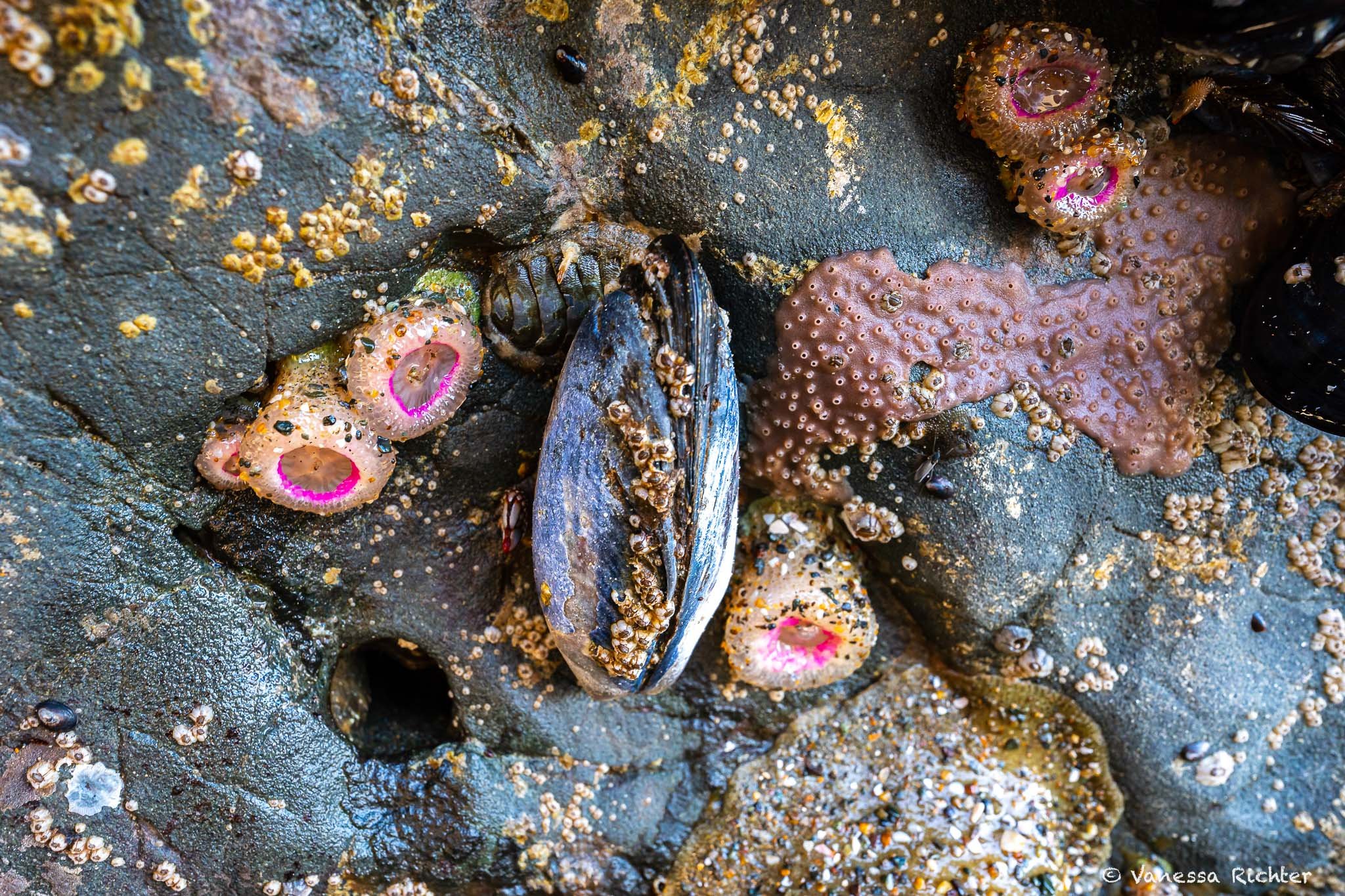
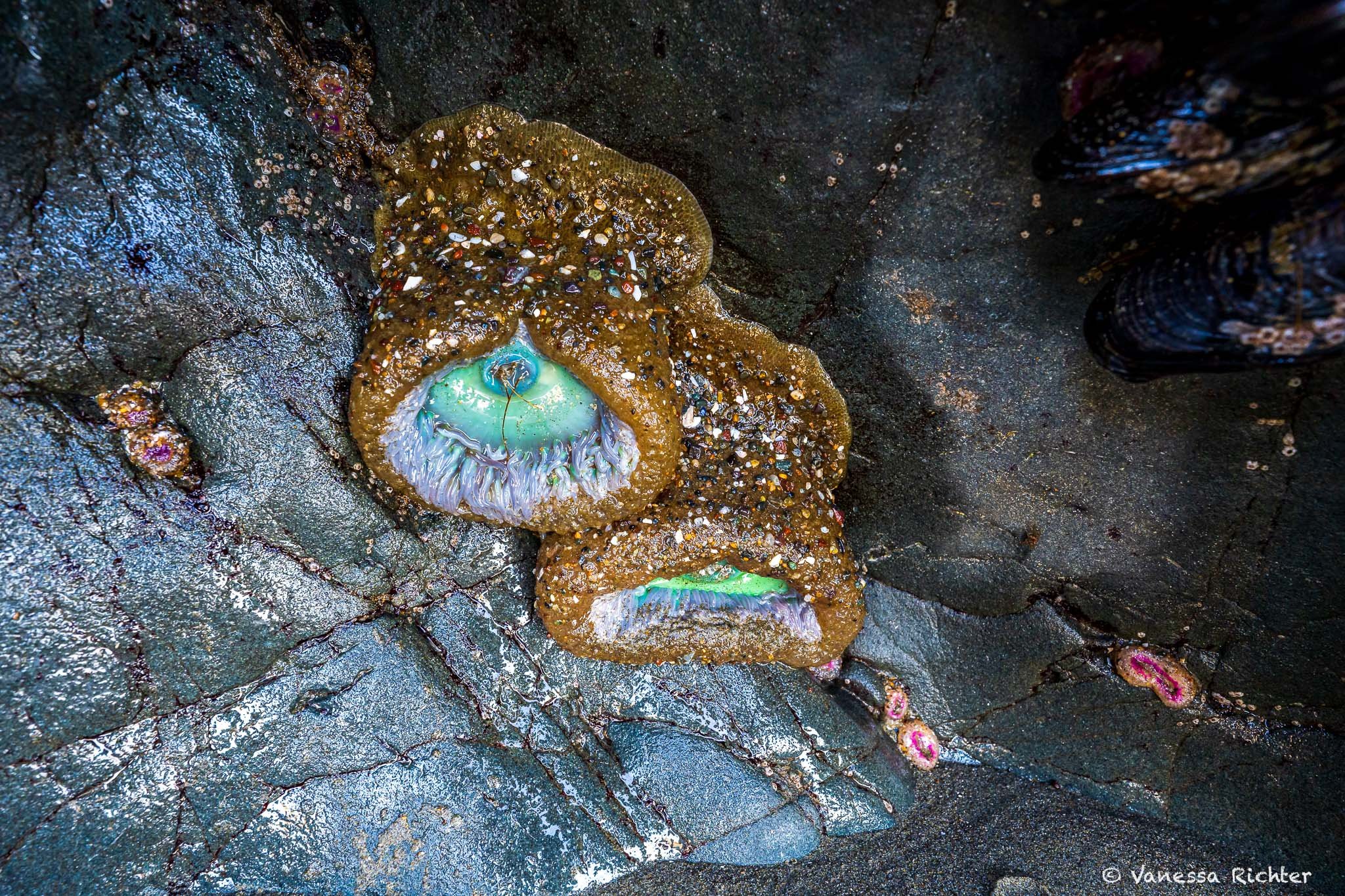

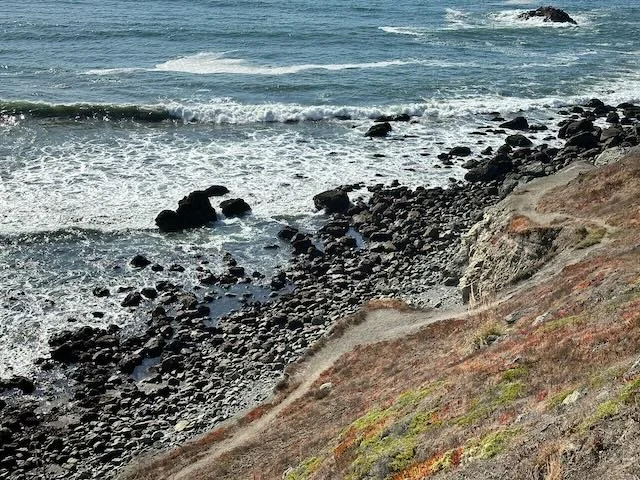


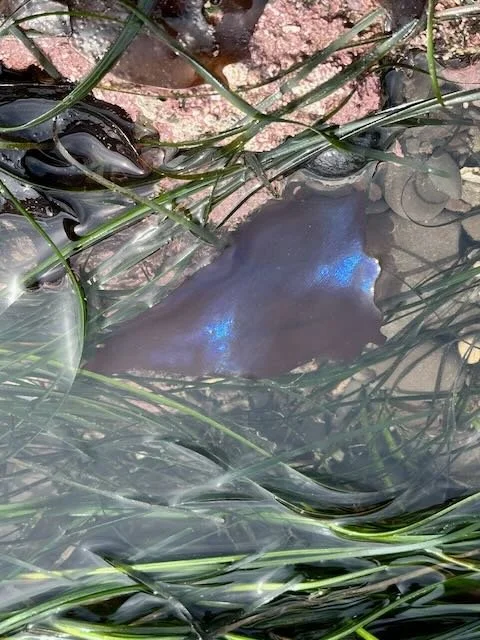
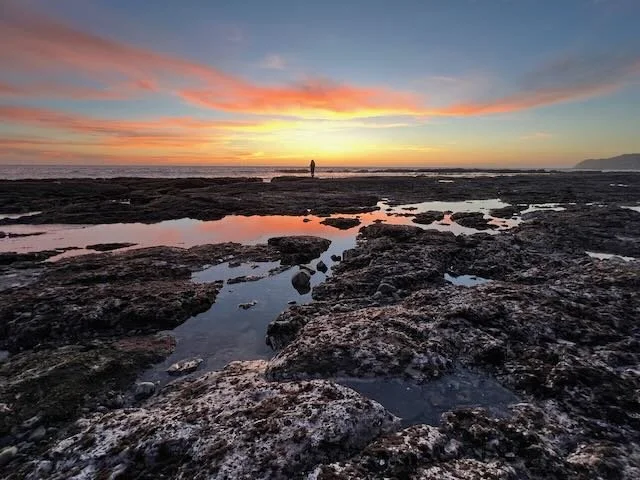


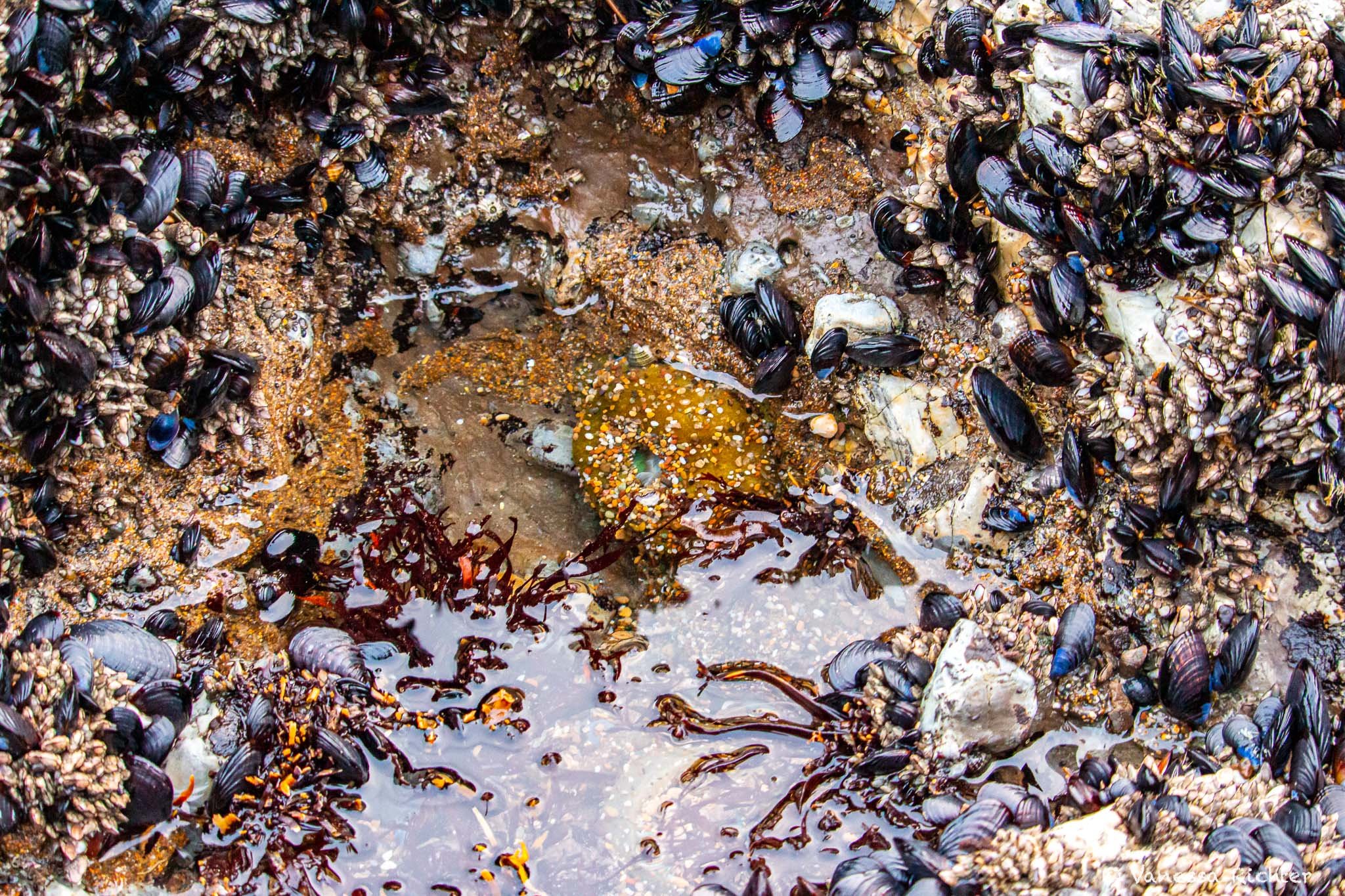

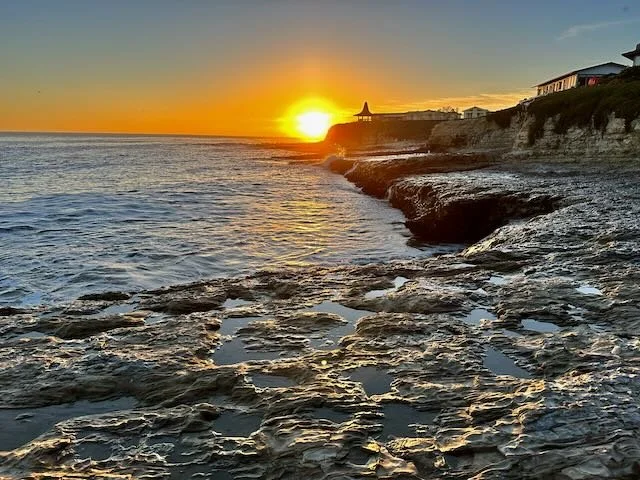



Monterey Bay, located on California's central coast, is renowned for its stunning marine life and spectacular whale-watching opportunities. In this article, I’ll take you on a tour to see these magnificent creatures, share insights on why Monterey is such a prime location to spot marine life, and provide everything you need to know before venturing out on a shaky boat into the ocean. While every tour is exciting, this one on a beautiful fall day in October 2023 was particularly special, as it featured an unexpected 'celebrity': the patchy white-gray orca, Frosty.